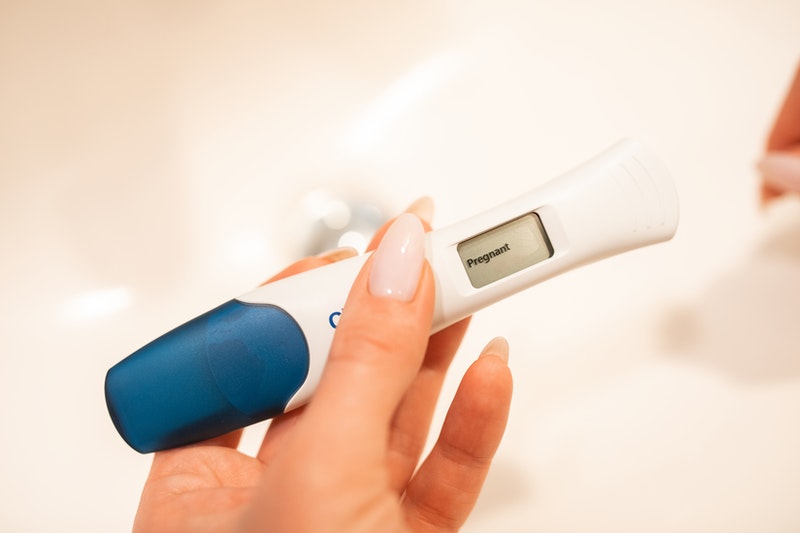Endometriosis and fertility problems are more intertwined than we think, but the medical treatment available is few and often extreme.
Imagine a disease that affected hundreds of thousands of Australian men.
Imagine it’s a disease where cells embed themselves into foreign places. Growing, dividing, multiplying out of control. Infiltrating into once healthy tissue. Distorting organs. Breaking down at regular intervals, causing internal bleeding and inflammation and pain.
Imagine this disease meant having sex for men was agony.
Imagine it made many of the affected men infertile and increased their risk for testicular cancer.
Imagine that the only way to diagnose such a disease was through surgery.
Imagine the social and economic impact of such a disease. Imagine the funding that would be allocated to help treatment and find a cure.
Just imagine.
You have to. Because no such disease exists.
But it does for women.
Why endometriosis symptoms are sometimes overlooked
Endometriosis, defined as the presence of endometrial cells outside of the uterus, is one of the most prevalent diseases in existence. It is thought that around 10 per cent of women of reproductive age have the condition which means there are approximately 700,000 suffers of the disease in Australia and over 170 million worldwide. Its financial cost in Australia, both through direct medical expenses and lost productivity, is estimated to be over $7 billion per year.
In the video below, Heba Shaheed explains the symptoms to look out for, a management plan, and the link between endometriosis and fertility.
Just like endometrial lining within the uterine cavity, endometriosis cells replicate and grow during the proliferative and secretory phase of the menstrual cycle, then break down and bleed when menstruation occurs. The most popular theory of its cause is retrograde menstruation whereby menstrual blood escapes from the ends of the fallopian tubes and implants in the pelvis.
This is the reason why menstrual cramps can sometimes be the first sign of endometriosis. And unfortunately, for many women, we have been raised to expect pain and discomfort during our period, therefore ignoring any warning signs.
“Period pain is not normal,” says Heba.
Period pain also doesn’t explain the occurrence of endometrial tissue in rare sites such as the lung, brain or skin, and it is likely that altered immunity, aberrant hormonal signalling and genetic factors also play a role.
Michael Freeman, associate professor of dermatology at Bond University in the Gold Coast, Queensland, has seen patients suffering from endometriosis in the skin. “Women present with a lump under the skin which swells and bleeds into the skin during the monthly period,” he said. “There are even rare cases of endometrial cancer occurring in the skin.”
In addition to dysmenorrhea (pain during periods) endometriosis sufferers can also experience constant pelvic pain, dyspareunia (pain during sex), infertility, and pain on urinating and defecating.
“Endometriosis is as common as asthma but we know very little about it,” Gold Coast-based fertility specialist and laparoscopic surgeon Kee Ong tells The Australian. “Across the whole spectrum, from the patients to doctors, awareness of this condition is pretty poor. Quite often patients are told, ‘It’s normal to have pain’, but women should not accept pain as normal. You need to exclude endometriosis.”
How endometriosis is diagnosed
For many women, obtaining a diagnosis of endometriosis can be a long and difficult journey. “I’ve said to my husband many times, if this was a man’s disease, they would have done the research on this at least 30 years ago. But because it’s a woman’s disease, we just get told that it’s normal and put up with it,” Brisbane nurse Katrina Sparke, 35, who cannot recall a single pain-free day since she commenced menstruation at the age of 12, said.
Katrina grew up in the United States and, because her family had no health insurance, she never saw a doctor. “My endometriosis slowly got worse and worse and worse and when I was going through university I pretty much lived off pain pills,” she said.
According to the online medical resource UpToDate, early diagnosis of endometriosis is important.
“Early diagnosis and treatment of endometriosis will retard disease progression and decrease the adverse long-term effects of the disease . . . and improve the quality of life of adolescents and women with this disorder”, the website says.
But a major roadblock to diagnosis is the fact that surgery, in the form of a laparoscopy (keyhole surgery), is the only definite method. “A normal ultrasound does not exclude endometriosis,” said Dr Kee. “We’re not saying that everyone needs to have a surgical procedure, but people need to be more proactive in thinking that possibly endometriosis is the problem.”
Women in Australia often experience a delay of seven to 12 years between the onset of symptoms and a correct diagnosis being made.
“I went to my GP but she wasn’t thinking endometriosis,” said Katrina, who migrated to Australia 10 years ago. “She sent me for a scan. And I thought, Okay, I don’t have endometriosis, they’ve done a scan, but you cannot identify endometriosis with a scan. It has to be surgery.”
Australian women face numerous barriers to having a laparoscopy. Even after referral to see a gynaecologist, public outpatient waiting lists are often up to a year or more to be seen, and then, once they are seen, there is often an equally long surgical waiting list.
Australian College of Rural and Remote Medicine president Ewen McPhee says that for women in regional and remote areas of Australia the delay can even be longer, and it is likely that many women remain undiagnosed because access to specialist care is difficult.
“The nearest specialist that I refer to that expressly deals with endometriosis is in Brisbane, 1000 kilometres away,” he said. “This disease isn’t something that virtual care mechanisms such as Telehealth can assist with.”
When Katrina finally underwent laparoscopic surgery she was found to have severe endometriosis (stage four). “It was like a war zone in there,” said Katrina. “They couldn’t see any of my organs because there was so much scar tissue.”
Can you get pregnant if you have endometriosis?

Women with minimal or mild endometriosis often have a higher success rate of falling pregnant on their own, compared to those with moderate or severe endometriosis.
The link between endometriosis and fertility is often overlooked however, because many women will be unaware that they have the disease until they start trying for a baby. This is because progesterone, a hormone present in most forms of contraception including the oral contraceptive pill, implanon rod and the mirena intrauterine contraceptive device, will often dampen the growth of endometriosis. This was the case for Kristy Tunbridge, 42, from Mudgeeraba, Queensland, who was on the pill from the age of 14 to 38.
“When I was on the pill the pain was masked,” Kristy said. “But when I came off it my periods became more and more painful.”
After a year and a half of trying to fall pregnant Kristy was referred to a fertility specialist who performed a laparoscopy.
“I was covered in endometriosis,” she said.
Up to 50 per cent of women with endometriosis will experience fertility issues and difficulty in falling pregnant. Given that many women are now delaying child-bearing until their 30s, when fertility is already starting to decline, the presence of endometriosis can significantly decrease their chances of having a child.
“A large proportion of women that I see who are struggling with infertility end up having endometriosis,” said Dr Kee. “If they want a baby, they need to be proactive.”
Surgery to remove the endometriosis can greatly increase the chances of pregnancy, only for a small window of time. “Research has shown us that women with endometriosis have a better chance of falling pregnant by themselves in the first four to six months after surgery,” said Dr Kee.
The sad link between endometriosis and fertility
Kristy was fortunate to fall pregnant after her initial surgery for endometriosis though many aren’t so lucky.
Katrina’s journey was just beginning upon her initial laparoscopy.
“My first surgeon said he couldn’t remove all the endometriosis because I could be risking organ damage, so I found another surgeon who could,” Katrina said.
Once her endometriosis was fully removed, Katrina tried several rounds of IVF but was unsuccessful. In desperation, she had a third laparoscopy which removed newly-grown endometriosis, and, following further IVF treatments, Katrina is now pregnant with twin boys.
Others are unable to have children no matter how hard they try. Queensland Premier Annastacia Palaszczuk is open about her long struggle with endometriosis, which left her infertile. And American writer and actress Lena Dunham underwent a hysterectomy in 2018 at the age of 31, despite being childless, after enduring multiple laparoscopies and suffering years of disabling pain due to endometriosis.
Obstetrician and gynaecologist Luke Waldrip says that it is a commonly held myth that a hysterectomy alone will cure endometriosis. “It may help some with their pain, especially during menstruation,” he said. “But as long as the ovaries are releasing oestrogen, which they will until menopause, endometriosis can still grow.”
Despite this misconception, Dr Luke believes that there is an increased awareness of endometriosis in the community.
“I’ve been seeing more and more young women in their late teens and early twenties who present to gynaecology outpatient clinic, often brought along by their mothers, requesting a laparoscopy,” he said.
A step closer to solving the endometriosis and fertility problem?
In response to pressure from patient advocates and clinicians across Australia, the federal government released a national action plan for endometriosis in July 2018. In the plan the Health Minister issued “an apology on behalf of the Australian Parliament and medical system for the historic failures that sufferers of endometriosis endured”. The plan announced $2.5 million funding for the Medical Research Future Fund and $1 million for education and aims to increase awareness, improve clinical management and increase research for endometriosis.
Absent from the plan, however, was any direct funding to reduce surgical waiting lists for endometriosis.
“While the Commonwealth provides funding to states and territories for public hospitals, the responsibility for the management of the public hospital system including waiting times rests with states and territories,” a spokesperson for the Department of Health tells The Australian.
Nor have there been any moves to cover Dienogest (a progesterone hormone treatment for endometriosis) or newer contraceptive pills such as Yaz, Qlaira or Zoely, on the Pharmaceutical Benefits Scheme, leaving many Australian women out of pocket up to $90 a month for treatments that some find effective for their endometriosis.
Despite this it is inarguable that the national action plan is a step in the right direction. “The main intent of the National Action Plan for Endometriosis is to identify what can be done to address the impact of endometriosis on the Australian community and support improved health outcomes for women affected by the condition,” the Department of Health spokesperson said.
Katrina says the changes cannot come soon enough. “Endometriosis is a lifelong condition that can be completely debilitating. It can affect your sex life, your marriage, your mental health and your fertility,” she said. “It is so important to get the word out about endometriosis so that girls can actually get an early diagnosis which will change their entire life.”
How helpful was this article?
Click on a star to rate it!
0 / 5. 0
Be the first to rate this post!
Suvi Mahonen
Related posts
Subscribe
Receive personalised articles from experts and wellness inspiration weekly!


